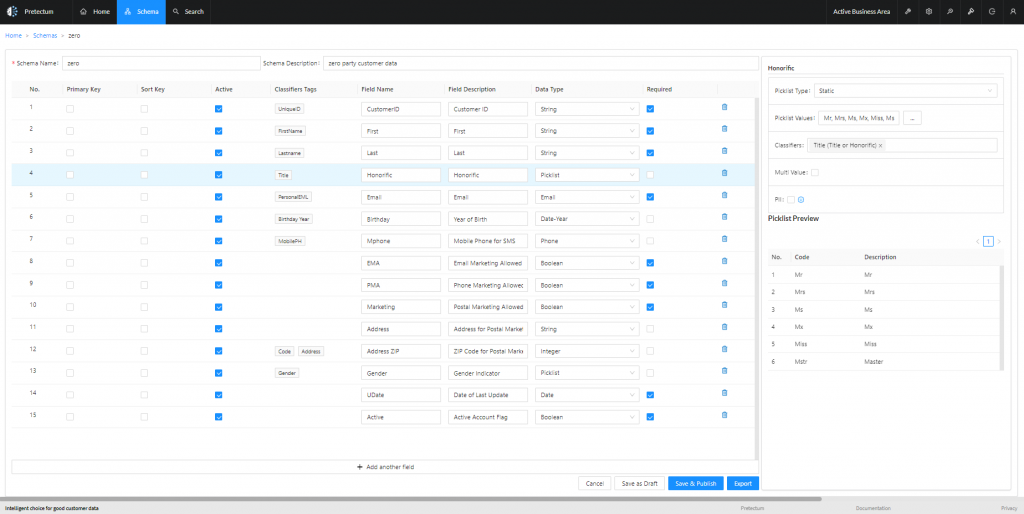The party we’re talking about is the first-party data party of course! Marketing teams, in particular, are aware of third, second, and first-party data and there’s been a growing focus on developing zero-party data (0PD) but what efforts are underway to develop your own organization’s unique understanding of the customer?
At Pretectum, we’re saying goodbye to the dependency on third-party cookies and as you will likely be aware, some of the biggest technology solution providers and companies are actively moving to wean themselves and their partners off of second-party data (2PD) and third-party (3PD) data from cookies. These cookies of course have historically been used to track people’s activity across the web.
Cookies have been used to provide detailed customer information to advertising platforms, allowing businesses to create highly targeted campaigns, some of them very controversially. You may be wondering how your future advertising campaigns can be successful without cookie data. This is where first-party data (1PD) kicks in.
What is first-party data?
First-party data is information about your customers collected by your business. You’re not
purchasing data or using insights harvested by other businesses. Instead, customers directly provide you with their information.
First-party data may be anything. From a transcribed form-fill to details provided by emails or recorded data from your website interactions from surveys, responses, etc. Tracking every interaction isn’t even necessary if you develop good first-party data and compile it into a profile in your customer master data management system. The best things about it? It’s all yours and it has been provided voluntarily by your customers and prospects.
A tool like the Pretectum CMDM is a great way to help your teams manage your first-party data. You could of course also do this in a limited way in a customer relationship customer management (CRM) system or a customer data platform (CDP) but is that the best way? We don’t think so. CRM for customer engagement, CDP for personalized marketing engagement, and CMDM for customer master data management!
Best of all, if you use the CMDM as a hub in a hub-and-spoke master data management strategy, you can have other system spokes like your Point of Sale (POS), service-desk and support, warranty, and loyalty systems. Every system and associate in your business is now reading off the same customer data sheet with a unified, consistent voice.
As explained, your business is responsible for gathering first-party data. Customers give it to you because of your sales, services, and support teams, your outbound marketing efforts, and your website.
Unlike second-party data from business partners or third-party data from faceless data brokers, your first-party comes from people who have engaged with your business, so they’re more likely to be receptive to your use of that data for improved personalization and customer engagement.

Taking all that engagement up a notch means gathering zero-party data, namely explicitly provided data with consent for use. Here too, the Pretectum CMDM allows you to store that data and can even be used to build that data in such a way that you have no need to worry about inadvertently intruding into people’s mailboxes, calling them, or dropping them a flyer or note where they live or work.
Most of your customers will be expecting you to personalize your interactions with them and research suggests that more than three quarters are more likely to purchase from a company if they encounter a personalized experience.
Using your customer data, you can craft ultra-targeted and situation-specific messaging for your customers. You can send extremely relevant emails to people who fit the particular customer profile of a campaign, increasing marketing ROI and reducing ad spend and marketing waste.
How do you gather that valuable data?
A tried-and-true strategy to collect first-party data is to offer something valuable in exchange for the offering up of customer information and preferences. What can you offer people that makes them want to give you their emails, complete names, addresses, or phone numbers? More importantly, what do you need to offer up to get the consent to send them messages via their phones, email inbox, and physical address?
Completing an email subscription form on your website is one, you can then integrate the results of that via API with the CMDM. That email subscription is signup to a rewards program codes notifier, a promotions flyer, or tips-and-tricks newsletter.
When a customer completes an eCommerce transaction, you could ask them if they want to create an eCommerce account for use next time and to associate with their shopping cart event. When you do that, here again, you could integrate this with the CMDM to reference with an external key, the eCommerce record with your centralized CMDM records.
Signups enable you to offer distinguished offers that can be delivered ahead of official launches and on a promotional basis in exchange for contact information and the right to contact, without investing in a potentially expensive loyalty program, your CMDM becomes the loyalty or rewards program contact data hub, a digital Rolodex on steroids of preferred customers.
Contact us today to participate in the free trial evaluation.


